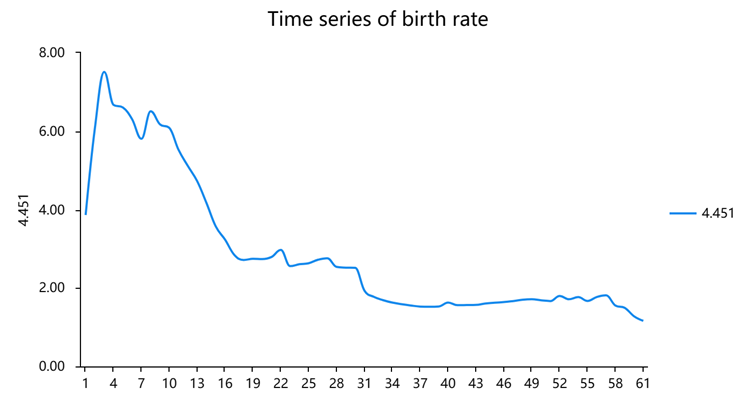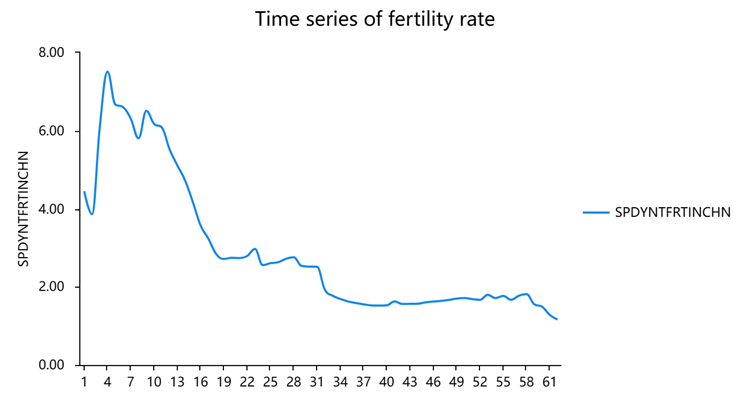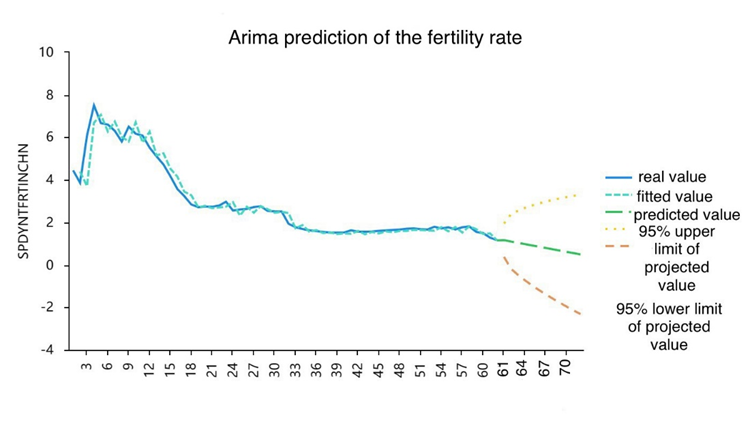1. Introduction
At present China is facing a very serious problem of old age in which according to statistics, that as of the end of 2019, China’s elderly population aged 60 years and above has reached 249 million people, accounting for 17.9% of the total population. It is expected that by 2030 the elderly population will be more than 400 million, which will further aggravate the urgency of the old age problem in China [1]. This is coupled with the fact that the number of only children in China has reached about 180 million as of last year. This is due to the fact that in previous years, China implemented a family planning policy that advocated for fewer children and better births, leading many families to have only one child [2]. Under these circumstances, the only-child family group is facing heavier pressure than other families in their ability to provide for the elderly while also shouldering the responsibility for the care of their parents, which leads them to have a greater need of the State’s support and assistance.
The State has decided to provide a better old-age protection for families with an only child by implementing a new policy [3]. This policy would provide numerous benefits to families with a single child, though this may adversely affect the population growth and rate of newborns as the benefits of having one child may influence the decision of parents in regards to the number of children they choose to conceive [4]. This however is far from the only issue plaguing China and its population problem. There have been data recorded of the adult population in China regarding their health with a growing diabetes epidemic being of particular concern, in both rural and urban populations. The health risks and consequences of diabetes causes a large strain on the Chinese economy and will be costly for many adults in China, which may affect their lifestyle including their ability to provide for themselves and their family members [5]. There have also been research studies performed on the neonatal mortality rate, or the rate of newborn deaths within the population in China. These neonatal deaths make up a large proportion of preventable deaths in the country and contribute to the population issue in China, in that the gap between the number of elderly and the youth in China will continue to grow wider with each passing year [6]. Together, these issues and factors that may seem unrelated to one another contribute to the general population predicament that China is tasked with solving.
2. Methods
2.1. Data source
The majority data comes from https://fred.com. The data from 1945 to 2021 and use more than thousands variables. Also the research labeled “Burden of diabetes in the adult Chinese population: A systemic literature review and future projections.”
2.2. Method introduction
This paper uses ACF graph, time series and Arima prediction to analyze the data. In order to determine the finer details regarding the factors that may affect the lifestyle of the Chinese population, accurate data from several research papers were required and consulted. One of these papers was authored by John Bongaarts and Susan Greenhaigh [7]. The one-child campaigns that China held and the lack of an alternative policy given for several years after the fact. Though this policy has since been lifted as of the writing of this paper, the lasting consequences of this one-child limitation policy has left unintended side effects for China’s fertility rate due to the perceived success and its establishment for several decades within China. Data from this paper include the drop of fertility within China ever since the establishment of the limitation policy and the cost of which this policy has left on one-child families. This is notable as in accordance with the needs of these families, the State has currently developed a new policy in which the goal is to aid these one-child families with their increased burden in supporting the elderly and their own families [8].
Another factor to consider was the health of the general population. This source contains details and projections of the diabetes epidemic within China and the increasing amount of the population that will develop diabetes over several years. Rapid westernization in China had led to a change in the lifestyle of many citizens living in China, with long-term health being majorly impacted as a result [9]. The data published in the paper was determined through an estimation of the diabetes patients in China at the time of the paper being written through researching articles published in both English and Chinese that had the keywords “diabetes”, “China”, and “prevalence”. The projections recorded in the paper were made by taking into account the population growth of China at the time and comparing the prevalence of diabetes in the population to those of similar cities in Hong Kong that were recorded at the time. Risk factors including the lifestyle of the average citizen was also taken into account when creating these projections of diabetes prevalence over time [10].
In order to consider the variable of newborn deaths, the article titled “Neonatal mortality and leading causes of deaths: a descriptive study in China, 2014-2018” was also taken into account. This paper addresses the neonatal deaths in China and its causes, which a large proportion of which are preventable if the issues were targeted, and potential measures the government can take to intervene. The study performed in the paper was based on data procured from the National Maternal and Child Health Surveillance System, and considered all the neonates that were observed to have died after their delivery. Their results also included the mortality rate and the leading causes of death for the neonates in the number that was analyzed at the time.
3. Results and discussion
The results and analysis of these research studies were used in our observations and considered for the role they play on China’s population. The graph below shows the time series of birth rate (Figure 1).

Figure 1. Time series plot of birth rate.
The diagram above shows a downward trend, at the same time, it does not show any cyclical or seasonal patterns. In the fourth year, the birth rate peaked at 8.00, and since then, the chart has fluctuated in an irregular pattern. In the 8th to 16th years, the birth rate declined rapidly, falling from about 7.00 to about 3.00. By the 16th year, the change of the chart had stabilized, with the birth rate hovering around 2.00. The graph below shows the fertility rate change (Figure 2).

Figure 2. Time series plot of fertility rate.
The diagram above shows a downward trend, at the same time, it does not show any cyclical or seasonal patterns. In the fourth year, the birth rate peaked at 8.00, and since then, the chart has fluctuated in an irregular pattern. In the 8th to 16th years, the birth rate declined rapidly, falling from about 7.00 to about 3.00. By the 16th year, the change of the chart had stabilized, with the birth rate hovering around 2.00 (Table 1 and 2).
Table 1. ADF test results.
difference in order | t | p | threshold value | ||
1% | 5% | 10% | |||
0 | -2.556 | 0.102 | -3.558 | -2.917 | -2.596 |
1 | -7.343 | 0.000 | -3.548 | -2.913 | -2.594 |
Table 2. AIC and BIC results.
difference in order | sample size | Built on lags | AIC value | BIC value |
0 | 54 | 7 | -28.438 | -10.537 |
1 | 58 | 2 | 5.031 | 13.273 |
The graph below shows the Arima prediction for the future of the population change in China. The graph shows stable increasing tendency, from -250G to 1500G, and the forecasting value is still a straight line. However, the real value may be under the forecasting value according to the orange line. This means that the increasing rate of China might decrease in the future (Figure 3).

Figure 3. ARIMA model prediction results of fertility rate.
The chart illustrates a decreasing tendency and does not show any periodicity or seasonality. In the sixth year, the population fertility rate reached its highest point of about 8, after which the diagram fluctuated in an irregular state until the fifteenth year, when the change of the diagram leveled out, fluctuating around the fertility rate of 2. In the forecast of the future, the fertility rate will continue to decline, constantly approaching 0.
Through a series of research and studies, the State has decided to provide better old-age protection for families with an only child by implementing a new policy. According to this new policy, families with an only child can receive certain pension subsidies as well as enjoy certain tax benefits once the parents reach an age range. For example, any parent who has applied for a honorary certificate for an only child can receive a subsidy of at least 60 yuan a year until the child reaches the age of 18. If the parents are state enterprise workers, there will also be a retirement subsidy, i.e., a five percent increase in the pension for workers who are an only-child once their parents have retired according to the prerequisite wording. There is also an only-child subsidy policy for rural areas, i.e., a pension insurance subsidy for one-child households in villages. Parents of one-child families are given a certain amount of subsidy or in some cases a full exemption, when they purchase the new rural insurance policy. Parents of one-child families are also entitled to a one-time bonus of at least 1,000 yuan each when the wife reaches the age of 55 and the husband reaches the age of 60. Lastly, the State also plans to fund the construction of a number of nursing homes which will provide free accommodation for elderly persons aged 70 and over while a modest fee will be charged for the parent of single-parent families and the physically challenged elderly.
4. Conclusion
The current study chose different sources and focused on the social pressures that come with a large population, such as an increase in diabetes and an aging population, most of which go unnoticed. It is undeniable that due to the limited amount of data, in addition to influencing factors, there may be errors in the model, and the sample does not cover all ages and ethnicities, resulting in possible differences, which may also affect the accuracy of the results. However, this research still has a lot of value and merit. First, the graphical method is used to visually analyze the specific population growth and aging ratio. Visualize experiments for clearer, more intuitive results. Second, it provides a specific analysis of the singleton policy. In addition to analysing the pros and cons of the one-child policy, there are government subsidies to improve the policy, which means that the findings will point the way to further relevant research in the future. Understanding the shortcomings of the one-child policy and constantly improving it leads to success in controlling the population.
Authors contribution
All the authors contributed equally and their names were listed in alphabetical order.
References
[1]. Zheng Z G 2017 On the Moderate Reduction of China’s Total Population. The 27th Annual Conference of the Chinese Society for the Study of Economic Laws, China Economic Law Research Association.
[2]. Li T P 2008 Incentive and subsidy policies for urban parents of only children in old age: current situation, problems and innovations. Journal of Henan Institute of Education:Philosophy and Social Science, 27(2), 8.
[3]. Liu L L and Guo S F 2015 Research on the impact of social welfare on population growth. Tianjin Economy, 11, 6.
[4]. Pan C, Shang S, Kirch W and Thoenes M 2010 Burden of diabetes in the adult chinese population: a systematic literature review and future projections. International Journal of General Medicine, 3(4), 173-179.
[5]. Zhang B, Dai Y, Chen H and Yang C 2019 Neonatal Mortality in Hospitalized Chinese Population: A Meta-Analysis. Biomed Res Int.
[6]. Li Y and Sun Q 2023 How to Effectively Promote the Improvement of Population Fertility Level: An Empirical Analysis Based on the Factors Influencing the Birth Rate in Jiangsu Province. China Health Administration, 40 (7), 486-490.
[7]. Yang B and Ding L J 2022 The impact of rising housing prices on China’s birth rate: an empirical analysis based on provincial panel data. Journal of Southwest Petroleum University: Social Sciences Edition, 24(2), 35-42.
[8]. Su L Y, Yu H Q and Guo W 2022 Research on Regional Differences in China’s Birth Rate. Journal of Chongqing University of Technology, 4, 36.
[9]. Ma G M and Ding B P 2023 Industrial structure, working hours of residents, and birth rate. Audit and Economic Research, 38 (1), 96-106.
[10]. Li X and Tao L 2022 The impact of right discontinuous immunity on nonlinear birth rate and hospital capacity. Journal of Tonghua Normal University, 43(10), 9.
Cite this article
Wang,K.;Zhou,Y. (2024). An alternative to the one-child policy in China. Theoretical and Natural Science,31,175-179.
Data availability
The datasets used and/or analyzed during the current study will be available from the authors upon reasonable request.
Disclaimer/Publisher's Note
The statements, opinions and data contained in all publications are solely those of the individual author(s) and contributor(s) and not of EWA Publishing and/or the editor(s). EWA Publishing and/or the editor(s) disclaim responsibility for any injury to people or property resulting from any ideas, methods, instructions or products referred to in the content.
About volume
Volume title: Proceedings of the 3rd International Conference on Computing Innovation and Applied Physics
© 2024 by the author(s). Licensee EWA Publishing, Oxford, UK. This article is an open access article distributed under the terms and
conditions of the Creative Commons Attribution (CC BY) license. Authors who
publish this series agree to the following terms:
1. Authors retain copyright and grant the series right of first publication with the work simultaneously licensed under a Creative Commons
Attribution License that allows others to share the work with an acknowledgment of the work's authorship and initial publication in this
series.
2. Authors are able to enter into separate, additional contractual arrangements for the non-exclusive distribution of the series's published
version of the work (e.g., post it to an institutional repository or publish it in a book), with an acknowledgment of its initial
publication in this series.
3. Authors are permitted and encouraged to post their work online (e.g., in institutional repositories or on their website) prior to and
during the submission process, as it can lead to productive exchanges, as well as earlier and greater citation of published work (See
Open access policy for details).
References
[1]. Zheng Z G 2017 On the Moderate Reduction of China’s Total Population. The 27th Annual Conference of the Chinese Society for the Study of Economic Laws, China Economic Law Research Association.
[2]. Li T P 2008 Incentive and subsidy policies for urban parents of only children in old age: current situation, problems and innovations. Journal of Henan Institute of Education:Philosophy and Social Science, 27(2), 8.
[3]. Liu L L and Guo S F 2015 Research on the impact of social welfare on population growth. Tianjin Economy, 11, 6.
[4]. Pan C, Shang S, Kirch W and Thoenes M 2010 Burden of diabetes in the adult chinese population: a systematic literature review and future projections. International Journal of General Medicine, 3(4), 173-179.
[5]. Zhang B, Dai Y, Chen H and Yang C 2019 Neonatal Mortality in Hospitalized Chinese Population: A Meta-Analysis. Biomed Res Int.
[6]. Li Y and Sun Q 2023 How to Effectively Promote the Improvement of Population Fertility Level: An Empirical Analysis Based on the Factors Influencing the Birth Rate in Jiangsu Province. China Health Administration, 40 (7), 486-490.
[7]. Yang B and Ding L J 2022 The impact of rising housing prices on China’s birth rate: an empirical analysis based on provincial panel data. Journal of Southwest Petroleum University: Social Sciences Edition, 24(2), 35-42.
[8]. Su L Y, Yu H Q and Guo W 2022 Research on Regional Differences in China’s Birth Rate. Journal of Chongqing University of Technology, 4, 36.
[9]. Ma G M and Ding B P 2023 Industrial structure, working hours of residents, and birth rate. Audit and Economic Research, 38 (1), 96-106.
[10]. Li X and Tao L 2022 The impact of right discontinuous immunity on nonlinear birth rate and hospital capacity. Journal of Tonghua Normal University, 43(10), 9.









